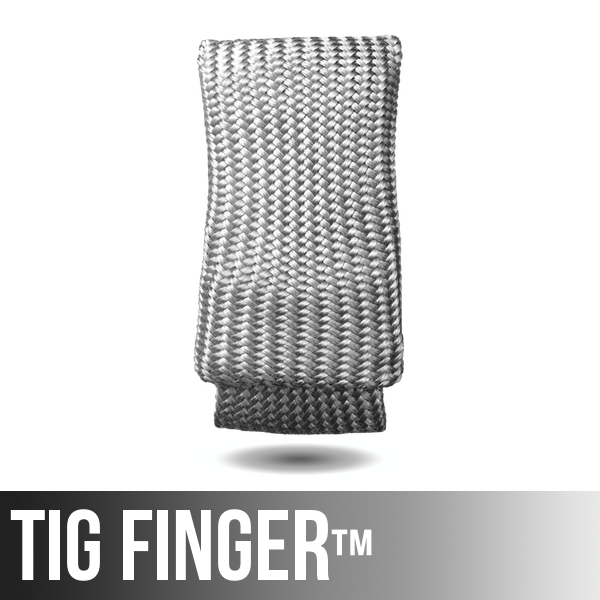Video Transcript:
Stick Welding Lap Joints with 6013
Today we’re doing some lap joints using a 6013 rod, not my favorite rod, at all, made no secret about that over the years. I’m trying to keep an open mind, though. 40 years ago I welded with my first 6013 in welding school, for a couple of days, and then moved on to other rods and I haven’t had to touch it since, because after working about five different nuclear plants, a couple of paper mills, couple of fab shops, never saw the rod again after welding school.
You can find some awesome looking pipe welds done over in the UK using 6013, I hear it’s popular over there for pipe welding. It’s not here in the States, so I’ve just ignored this rod forever, but trying to keep an open mind today, help a student maybe get through this step so you can get onto 6010, and 7018. Or if you just have a buzz box you want to build a wood rack, or a welding cart out of square tubing, these tips should apply just as well. Let’s dive in.
I’m using an old school thunderbolt today, set at roughly 110 amps, and I’m going to be on DC electrode negative, at first. We’ll weld on all polarities before we’re done. Bending the rod like this a little bit allows you to get pretty much an angle you want. I do it a lot. I’m welding right outside my back door on a little portable nomad welding table. You can hear that Miller thunderbolt groaning in the background, and I’ve got it actually muted for part of this because it’s just hard to talk over.
I’ve got the amperage dialed in fairly close, about 110 amps, and the material is only an eighth of an inch, 3.2 millimeters thick, so it just doesn’t take a whole lot. I can see right now the thing is starting to bow a little bit, I’m gonna have to put a few more tacks on it, probably should have realized that to start with, but I’m gonna put a few tacks here, midway, trying to make them a little smaller than the final weld so I can go over them without seeing them. A good tip there would be use a little smaller rod for those tacks, but I didn’t have one on hand.
I’m going to alternate directions here, too. Every time I go from right to left, the next weld is going to be from left to right. I think its good practice to go bath directions early on in your training, you will have to do that in the real world, in the field. There are obstacles in the way that require to go one direction one minute, then the next direction the next. We will be dunking this in a bucket, a quench bucket, periodically. I have to say that’s not something you want to get into the habit of doing to actual serviceable parts, that’s just for the sake of speeding up the process here.
Oh, look, we’ve got a little visitor here. Let’s see if he’s moving. Yep, we’ll have to get him out of there right soon, I don’t want to boil him. That water gets pretty hot after dunking it four or five times. Okay, so that one was right to left, next up we’re going left to right. Get comfortable, where I can make full run without getting in a jam, and light up and go. Everything just looks different too when you change directions, so you need to get accustomed to moving your head, getting the right line of sight, getting comfortable. Left to right, right to left, shouldn’t make a difference after a while.
Come to the very end I’m backing up momentarily to fill the crater, good practice to get into. Now, we’ll quench it again. Looks like he’s doing fine, but it’s time to go ahead and get him out of there. The water is just about like warm bath water so far, so it didn’t hurt him. He’ll be fine. Just gave him a nice little jacuzzi action. All right, let’s finish this thing up.
Again, nice tight arc with maybe a good 25 degrees of rod angle, maybe 30. Finally, got the heat kind of dialed in, I started off with some practice runs. I was a little hot, I was a little cold, but now it seemed to settle in about 110 amps. If this was thicker, if this was say 3/16ths or a quarter inch thick, I could take the rod on up to the high end of the range. More like 125, 135 amps, but it’s not. It’s just an eighth of an inch thick, doesn’t take that much.
See all that slag just swirling around in there and you can’t really distinguish the puddle yet? That’s kind of what I don’t like about 6013’s. That one happened to turn out good, but I’ve also been surprised and had slag pockets there on the start. All right, we do a restart here.
I’m going to light up a head, long arc it for about a second as I go into the crater and then carry on. Hopefully, I got right into the crater, and there won’t be any little void or anything like that. But, I’m missed it by that much. Nothing like hearing a buzz box with birds singing. This is the first side of the plate where I was dialing in the amperage, and I got surprised a couple time from a little slag pocket like this, so I had to crank the amps up a little bit. But, that’s kind of the nature of the beast with 6013, especially if you’re going slightly downhill.
All right. Now let’s compare DCEN, DCEP, and AC. First up, DCEN, we’re going to do a quick little run here, even though we already have run it. I want to refresh your memory with a good little close up arc shot. Let’s go to DCEP now, this is supposed to give you deeper penetration, and you can see it looks a little hotter. At least I think it does, puddle seems to be a little wider, but not like night and day. And now, AC. They all look the same, don’t they? They sound a little different, maybe not on the film here, but in my ear when I was doing them you can tell a little difference in the buzz of the arc, but you know the rod is designed for all three, and they’re really hard to tell them apart.
There’s the DCEP, penetration not nearly as deep as I would have thought. There’s the DCEN, slightly shallower, but not much difference. There’s the AC, some subtle differences, but not like night and day. What was really surprising to me was this was only an eighth of an inch thick material, and I didn’t even penetrate nearly halfway through. You just don’t get a lot of penetration with 6013.
So, what are the take aways from this video? Number one, make sure you have enough amperage because what I see a lot of times in new students is you’re not using enough amperage, being afraid of it a little bit, then having to hold a long arc to compensate, to not stick the rod because you don’t have enough amperage. Here’s really good advice for any stick welding, you know. Set the amperage hot enough where the rod won’t stick when you hold a really tight arc, then hold a really tight arc. Another thing on 6013’s is, it is a very slaggy rod, that slag can swirl around and fool you, and you think you got a puddle, when actually you just got a puddle on each side of the bead, and that slag run down the middle. A little more rod angle than what the textbooks call for, which is they only usually call for about 10 degrees, I’d say 20, maybe even 30 degrees sometimes, to keep that slag pushed to the back of the puddle where it can’t get up ahead of you and swirl and cause pockets and problems, and all that stuff.
Use enough amperage, keep a good tight arc, use more rod angle than what the books call for. You should get through that exercise, or you should be able to build your wood rack or your welding cart, or whatever, no problem. Also, don’t hesitate to use alternating current. You avoid arc blow that you get sometimes on DC, and there’s not much difference in the results, so I actually, if I’m gonna weld a 6013, I prefer AC, but that’s just me.
All right. So, remember this video is not sponsored by anybody, other than my own online store. That’s at Weldmonger.com. That’s how I support these videos. For tig fingers, gas lens kits, stubby gas lens kits, DVD sets. Head over to Weldmonger.com. I appreciate your support, see you next time.







August 3, 2017 at 2:19 PM
Hey Jody, could you add the 316 stainless steel filler wire to the TIG process?
I have also been welding almost every thing with the 6013 rods and I did not have any problems with it. Used also on hard places like excavator boom and still ok 👍🏻
July 25, 2017 at 5:08 PM
Nice video! I guess i have a lot of similare to those rods in my garage/shop, from Esab and called ok46. I have used them a lot. They are from the shipyard where my father in law worked almost his whole life. Solheimsviken in Bergen Norway. So much of the oil installation in the north sea are welded with those rods, at least over sealevel.
July 25, 2017 at 7:43 PM
Thank you for what you do. Great info.